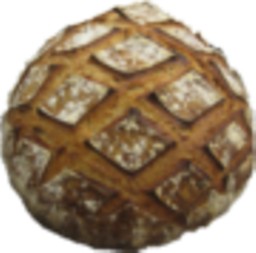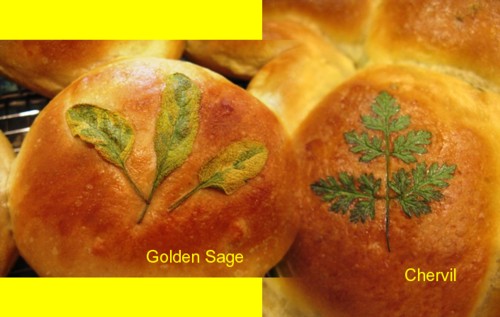Dopo un mese pieno di impegni ho finalmente il tempo e la tranquillità per aggiornare il blog. Il mese di maggio è stato un mese frenetico: Corsi di Panificazione, Gite Sociali, Festa del Pane e Festa del Punto Parco hanno scandito i nostri fine settimana.
After a very busy month I finally got some time and tranquility to update the blog. The month of May was full of work: Bread Baking Courses, ItaliaNostra Social Trip, Feast of Bread and the Feast of PuntoParco marked our weekends.
Fortunatamente quasi tutto è andato per il meglio, non senza imprevisti, come il brutto tempo delle ultime settimane che ha "rovinato" la Festa del Punto Parco impedendo lo svolgimento di molte attività previste (animali da cortile, giochi dimenticati, figuranti, risottata nella "pentolaccia" ...).
Fortunately, almost everything has gone well except a very bad weather in recent weeks that has "ruined" the Feast of PuntoParco preventing the conduct of many planned activities.
Ecco un riepilogo degli eventi svolti.
Here a summary of the events of this month.
Corsi Panificazione (Bread Baking Courses)
Per il primo anno abbiamo svolto i nostri corsi nel nuovo laboratorio/cucina. Immersi nella bellissima ambientazione tra le due barchesse accanto al nuovo (ma ormai ben collaudato) forno a legna, il tutto incorniciato dal verde della natura e degli orti didattici.
For the first year we did our courses in the new lab / kitchen. Immersed in the beautiful area between the two "barchesse" next to the new (but now well-established) wood fired oven, all surrounded by the natures and our didactic gardens.
Ecco qualche foto che sono riuscito a scattare in quei brevi istanti senza le mani in pasta! Non è stato possibile documentare tutto, ma questo piccolo "assaggio" può darne un'idea.
Here some photos I had the chance to take in those few free moments without my hand full of dough. It wasn't possible to document everything, but I think those images can give you the sense.
Chef: Pane Francese (Chef: French Bread)
Qualche micca a lievitazione naturale cotta nel forno elettrico: farina biologica macinata a pietra, acqua, sale (senza lieviti aggiunti).
Sourdough miches baked in the electric oven: organic stone grounded flour, water, salt (without added yeast).


Fuoco e Fiamme: la Pizza (Fire and Flames: Pizza)
Una delle tante, cotta nel forno a legna ... per me la prima volta, che bello! Qui la più semplice, pizza bianca ad alta idratazione e lenta lievitazione: farina bianca, acqua, olio, sale, lievito di birra per l'impasto, solo olio e sale sopra.
One of the many, baked in the wood fired oven ... for me the first time, very nice! Here the simplest, white pizza with slow rising high hydration dough: white flour, water, oil, salt, fresh yeast for the dough, just oil and salt for the topping.




Gita in Valchiavenna: tra Crotti, Bresaole e Palazzi
Una gita intensa: l’antica Abbazia cistercense di Piona, Piuro ed il Crotto Belvedere, le cascate dell’Acqua Fraggia ed il Palazzo Vertemate. Questa volta Arturo non ha risparmiato su nulla! Il LINK alla locandina con il programma dettagliato.
A very intense trip: the cistercian Abbey in Piona, Piuro and Crotto Belvedere, Acqua Fraggia waterterfalls and Palazzo Vertemate. This time Arturo planned a very rich trip! Here the LINK to the playbill with the detailed program.
Un collage riassuntivo (clicca sulla foto per visualizzare la versione ad alta risoluzione).
A collage summary (click on the photo to see the high resolution version).

Festa del Pane (Feast of Bread)
La prima Festa del Pane a Cascina Favaglie, perfetta occasione per inaugurare ufficialmente il nuovo forno in presenza della giunta comunale. Il nostro progettista Giuseppe, preciso e pignolo, ha fatto un ottimo lavoro, come dice lui scherzando, è già pronto per il prossimo forno.
The first Feast of Bread at Cascina Favaglie, a perfect moment for the official inauguration in presence of the city councile of our new wood fired oven. Our designer Giuseppe, precise and meticulous, done a great job and, as he used to joke, he's still ready for the next one.

Tre giorni di panificazione: sabato, domenica e lunedì. Domenica abbiamo veramente esagerato, tre infornate la mattina ed una, non programmata, il pomeriggio per un totale di 4*30 kg = 120 kg di impasto (l'impasto lo fa il panettiere, ma infornare non è da meno). Poi nel tardo pomeriggio anche 16 pizze con poolish preparate il giorno prima da Arturo e 4 pizze bianche (quelle sopra) impastate a mano durante il corso della pizza di sabato.
Three days of baking: saturday, sunday and monday. Sunday we really exaggerated, three batch in the morning and one, not planned, in the afternoon with a total of 4*30 kg = 120 kg of dough (the dough is mixed by a bakery for us, but baking that stuff is not less). Then in the evening we did also 16 pizze with poolish mixed the day before by Arturo and 4 white pizze (the one showed above) mixed by hand in the pizza baking course of saturday.
(clicca sulla foto per visualizzare la versione ad alta risoluzione)
(click on the photo to see the high resolution version)


Festa del Punto Parco (Feast of Punto Parco)
Purtroppo il maltempo ha impedito la realizzazione di gran parte del programma... Nonostante ciò, attorno all'aia (e al forno a legna acceso per l'occasione per riscaldarci...), ci siamo trovati in parecchi e abbiamo tirato sera tra musica, balli, risottate cucinate dalle cuoche di Italia Nostra e l'esibizione canora del Gruppo Corale "Il Melograno". Presente la Giunta Comunale quasi al gran completo. Grazie a tutti per la partecipazione e arrivederci alla prossima manifestazione (che per leggi statistiche dovrà godere per forza del bel tempo...)!
Unfortunately the bad weather has prevented the realization of much of the program ... Nevertheless, around the barnyard (and the oven turned on for the chance to warm up ...), we were a lot of us and we got night with music, dancing, risotto cooked by our chefs of ItaliaNostra and the singing performance of "Il Melograno" Choral Group. Present the City Council almost in full force. Thanks to everyone for participating and we hope to see you the next time (which for statistical laws must necessarily enjoy the goodweather ...)!

































